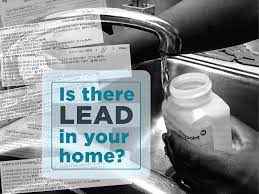The state’s abortion rate has increased by 16 per cent since 2011. This is one of six states that saw an increase in abortion rates during this time, despite multiple restrictions on abortion access. According to the Guttmacher Institute’s report, which tracks trends in abortion access, access, and legislation in the country, the increase in 2017 was only 2,550, compared with 2,220 in 2011. Mississippi’s abortion rate is still low at 4.3 per 1000 women between 15 and 44, partly due to its small population and low total abortions. The Centers for Disease Control and Prevention abortion statistics tell a completely different story. While the Guttmacher report only considers in-state abortions, the CDC data includes Mississippians who have had an abortion in their state. The distinction between out-of-state and in-state rates is crucial to understand the entire picture of women seeking abortions, especially in states like Mississippi that have more restrictions on abortion. In general, Mississippians had fewer abortions in 2015 than in 2011, which is consistent with U.S. trends. Because the CDC data includes women who have traveled across state lines to undergo the procedure, the overall numbers are not as accurate as the Guttmacher report. 558 Mississippians had an abortion in 2011, with 60 percent of them traveling out of state. According to the most recent CDC data, 4 699 Mississippians had an unplanned pregnancy in 2015. Only 44 percent of these abortions were performed outside the state. In 2015, only Missouri and South Carolina had higher rates of abortions in the state. However, CDC data for 2015 show that the state has a similar abortion rate to the Guttmacher report. This is the fifth-lowest in the country. However, when you consider all Mississippians who sought abortion treatment in 2015, the state’s abortion rate rises to the middle of country at 8 abortions per 1000 women. This is one point less than the median rate of 9 abortions per 1000. Since 2011, state lawmakers have passed numerous laws that restrict access to abortion and other reproductive health care. These include bans after 15 weeks of pregnancy in 2018, and a new 6-week ban in 2018. Both of these laws are currently being re-examined by federal appeals courts. U.S. District Judge Carlton Reeves stopped both bans and gave the Center for Reproductive Rights (which sued the state for these and other restrictions) permission to combine the lawsuits into one earlier in the year. According to a Mississippi Today analysis, the cost of litigating these restrictions, many of which have been overturned by the courts, was more than $1 million. This figure is based on state attorneys’ fees and time. A federal judge in Mississippi awarded Jackson Women’s Health Organization $700,000 in attorney’s fees earlier this year for a 2012 case which successfully blocked an admission privileges restriction. These fees brought the state’s attorney fees and costs to $980,000. This does not include the 6-week ban litigation. Hillary Schneller, the lead attorney representing the center that sued the state for its bans, stated that data in the new report shows restrictions don’t necessarily reduce or stop abortions but rather add obstacles — such as the high number of women who leave the state to seek treatment. “Restricting legal abortion access does not change that pregnant women will always have access to abortion care. Anti-abortion laws make it more expensive and difficult for women to have abortions. They also delay abortions later in the pregnancy. Politicians should invest in sex education and expand access to contraception if they really want to reduce abortion rates. She said that it was common sense. Mississippi is an excellent example. “Mississippi is a good example. The goal to reduce abortion access in the state has been a long-held goal of state legislators. The offices of Speaker Philip Gunn (R-Clinton) and Lt. Governor. Tate Reeves didn’t respond to our requests for comment. To support this important work, make a regular donation to Tate Reeves today.










